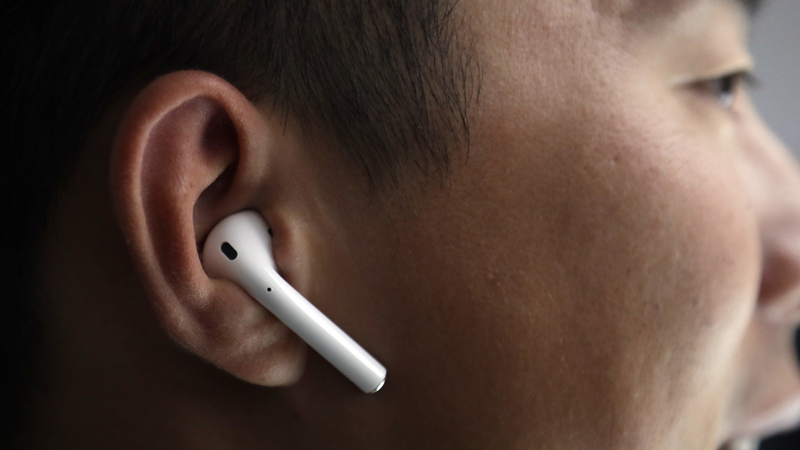APPLE’S SLEEK AIRPODS represent the company’s vision of a hands-free, wireless future. Sure, the sound is only fair to middling, but Apple made them ridiculously convenient. And they’re here to stay, because Apple eliminated the headphone jack on the iPhone 7.
There’s just one problem: Apple AirPods are all but impossible to recycle, which makes them a Herculean environmental challenge.
My company iFixit was among the first to get a pair. We tear stuff down, so instead of cueing up U2, we took them apart. Easier said than done, because Apple glues AirPods together. We tried heating them. Prying them. Even cutting them, which bloodied one of our engineers. (Sorry, Scott). As I write this, an engineer is using a Dremel to dismantle the AirPod charging case. If he hits a battery, I’ll know it from the boom.
At this point, I am confident in saying there is no practical way of opening a pair of AirPods.
As a consumer, you probably don’t care. When your AirPods die, they’ll almost certainly have become cheap enough to replace. But you should care, because these things run on lithium-ion batteries—one in each pod, and a larger one in the case. If you’ve ever owned anything with a rechargeable battery, you know most lithium-ion batteries have a usuable lifespan of just a few years. Eventually, your AirPods will stop working.
Then what?
Like everything else Apple sells, AirPod packaging features the “do not landfill” icon of a crossed-out trash bin. Apple wants you to recycle your AirPods, but doesn’t say how.
Recycling electronics is remarkably complex. Recyclers must dismantle gadgets and manually remove the batteries before sending the devices to a shredder, which mechanically separates the materials that can be melted down, recycled, or reused. Samsung’s Note7 debacle made abundantly clear the risks of compromising or mishandling a lithium-ion battery. Now imagine one inadvertently loaded into a shredder full of flammable dust and e-kindling. Kablooey.
Apple is hardly alone in making its products difficult to break down. “Manufacturers design electronics to be fast, and easy to use, and really thin,” says John Shegerian, CEO of ERI, one of the biggest e-waste recyclers in the US. “They aren’t designed to be easy to recycle. Gluing products together, hiding the batteries away—that all makes recycling more difficult, less profitable, and more dangerous. Three things you don’t want recycling to be.”
When manufacturers make batteries impossible to remove, they also make those product impossible to safely and profitably recycle. In other words, they disincentivize recycling. Apple provides no guidance to recyclers dealing with the millions of gadgets consumers discard each year, leaving them to figure out how to open sealed cases, locate batteries, and break everything down without blowing anything up.






